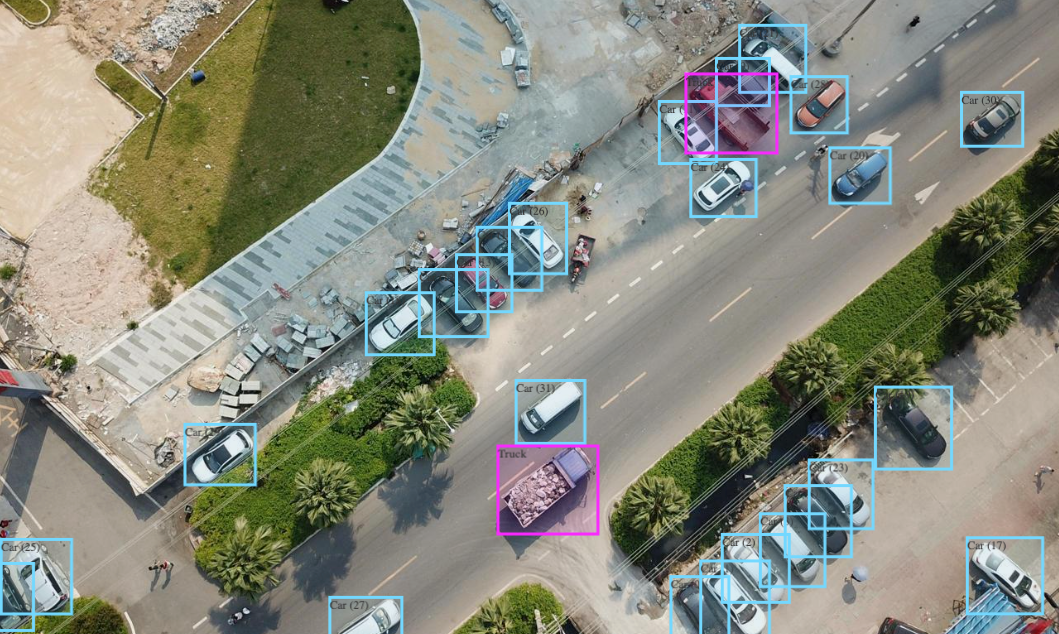AI Product Development
Self-Supervised Learning for Drone Video Analysis and Infrastructure Monitoring
Client: KLASS Engineering

Executive Summary
KLASS Engineering deployed advanced AI-powered drone video analysis for building facade inspection and fire detection, utilizing self-supervised learning to achieve 96% accuracy in structural defect identification and real-time hazard detection.
Challenge
KLASS Engineering needed an innovative solution for large-scale infrastructure monitoring and safety assessment. Traditional manual inspection methods for building facades were time-consuming, dangerous, and often incomplete. The company required an AI-powered system capable of autonomous drone video analysis, structural defect detection, and real-time fire hazard identification across diverse architectural environments.
Solution
We developed a comprehensive AI platform combining self-supervised learning, computer vision, and drone technology for automated infrastructure monitoring:
Core AI Technologies
Self-Supervised Learning Framework
- Automated Feature Learning: Proprietary self-supervised algorithms learning structural patterns without labeled data
- Transfer Learning: Domain adaptation from general imagery to specialized architectural analysis
- Continuous Learning: System improvement through automated data collection and model refinement
- Multi-Scale Analysis: Detection capabilities from macro structural elements to micro surface defects
Drone Video Analysis System
- Real-time Processing: Live video stream analysis during drone flights
- Building Facade Analysis: Comprehensive structural assessment including cracks, weathering, and material degradation
- Fire Detection: Advanced thermal and visual analysis for early fire hazard identification
- 3D Reconstruction: Point cloud generation for detailed structural modeling
Technical Implementation
- Edge Computing: Onboard drone processing for real-time decision making
- Cloud Integration: Comprehensive data analysis and historical trend monitoring
- Autonomous Navigation: AI-guided flight paths optimized for inspection coverage
- Multi-Sensor Fusion: Integration of RGB, thermal, and LiDAR sensors
Results
The intelligent drone analysis platform achieved remarkable performance across all monitoring applications:
Technical Performance
- 96% Accuracy in structural defect identification
- 98% Fire Detection Rate with <2% false positive rate
- Real-time Processing: 30 FPS video analysis with sub-second alert generation
- Coverage Efficiency: 10x faster inspection compared to traditional methods
- Safety Enhancement: 100% elimination of human exposure to hazardous inspection environments
Operational Impact
- Cost Reduction: 70% decrease in inspection costs through automation
- Data Quality: Comprehensive 3D documentation with millimeter-level precision
- Predictive Maintenance: Early defect detection enabling proactive repairs
- Scalability: Simultaneous monitoring of multiple buildings and infrastructure sites
- Compliance: Automated reporting for regulatory and insurance requirements
Technologies Used
AI and Machine Learning
- Self-Supervised Learning: Custom contrastive learning frameworks, masked autoencoders
- Computer Vision: PyTorch, OpenCV, custom CNN architectures for structural analysis
- 3D Processing: Point cloud analysis, mesh generation, spatial reasoning algorithms
- Deep Learning: Transformer architectures, attention mechanisms for temporal analysis
Drone and Hardware Integration
- Drone Platforms: Enterprise-grade UAVs with multi-sensor payloads
- Edge Computing: NVIDIA Jetson AGX for onboard AI processing
- Sensor Systems: High-resolution cameras, thermal imaging, LiDAR scanners
- Communication: 5G connectivity for real-time data transmission
Software Infrastructure
- Flight Control: Autonomous navigation with obstacle avoidance
- Data Pipeline: Real-time streaming, cloud storage, and analysis workflows
- Visualization: 3D mapping interfaces and defect highlighting systems
- Integration: APIs for existing building management and maintenance systems
Technical Innovations
Self-Supervised Architecture
- Novel contrastive learning approach specifically designed for architectural imagery
- Temporal consistency modeling for video-based structural analysis
- Multi-modal self-supervision combining visual and thermal data streams
Intelligent Flight Planning
- AI-optimized inspection routes based on building geometry and historical data
- Adaptive flight patterns responding to weather conditions and structural complexity
- Automated coverage verification ensuring complete inspection quality
Advanced Detection Algorithms
- Hierarchical defect classification from surface-level to structural concerns
- Thermal anomaly detection for hidden structural issues and fire risks
- Progressive damage assessment through temporal comparison analysis
Impact
KLASS Engineering’s drone analysis platform revolutionized infrastructure monitoring by combining cutting-edge AI with practical engineering applications. The system’s self-supervised learning capabilities enabled rapid deployment across diverse architectural environments while maintaining high accuracy. This project established new industry standards for automated building inspection and demonstrated the potential of AI-powered drone technology in construction and facility management.